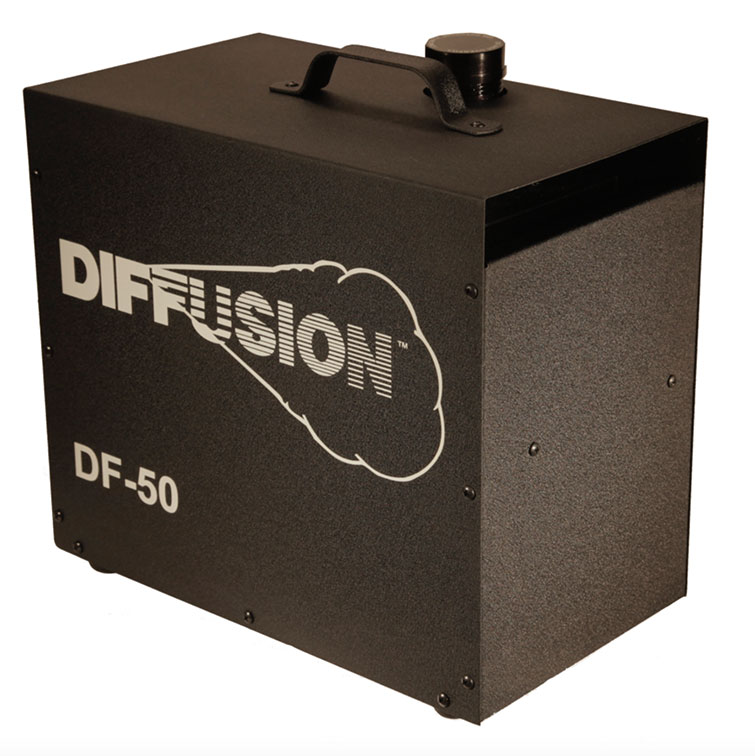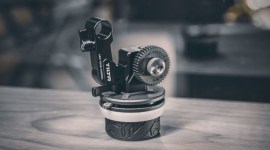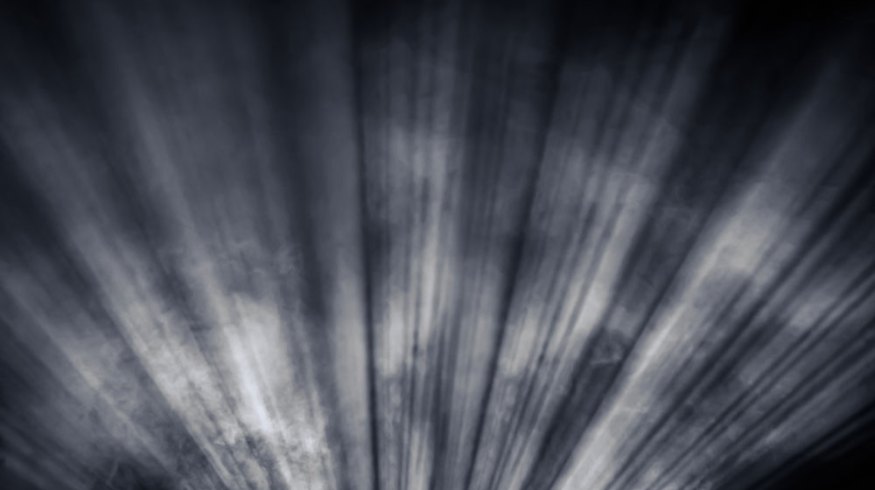
Add Atmospheric Texture to Your Production with Haze or Fog
Take a look at how you can use haze or fog to increase the production value of your next shot by adding texture and ambience.
If you do a quick search on cinematography blogs, you’ll find that one of the most common questions is How do I create the texture of blinds on a wall? There are two parts to the equation: a hard light source and atmosphere. Typically, this atmosphere is a haze or a fog, which allows you to see the light’s path of your frame.
In fact, I remember learning this exact lesson in science class. When you shine a laser pointer from one end of the classroom to the next, without any texture in the air, all you see is the dot on the wall. Spray some hairspray, then shine the laser again — you’ll see the full beam cutting through the air. Basically, the same practice applies to filmmaking when we introduce atmospheric texture. And creating the look of blinds on the wall is just the tip of the iceberg.
So, let’s take look at several ways to create this atmosphere.
The Industry-Standard Option
The DF-50 Hazer is the industry standard. You’ll find it at every rental house, and it’s a breeze to use. Typically, it creates an oil-based haze. This formula helps the haze hang in the air for longer, so you’re not constantly re-hazing the scene. While it’s not the cheapest rental, it’s consistent, and you’ll find it on most professional sets.
The Indie-Standard Option
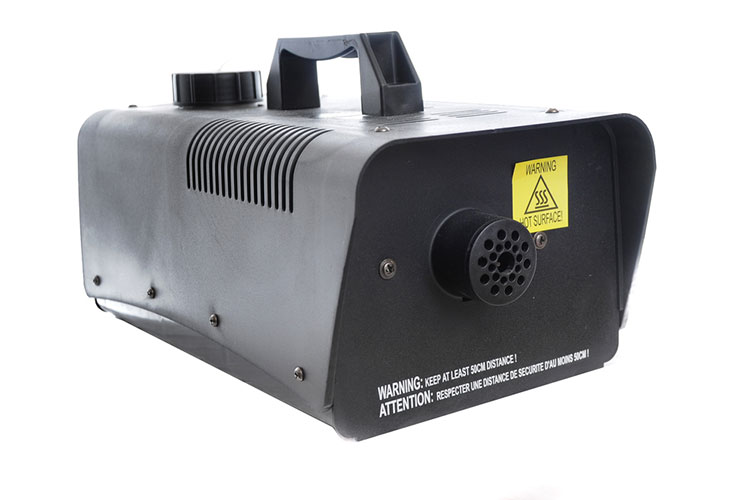
Image vie Vlue.
A Halloween (or party fog machine) is a cheap and efficient option. In fact, you can purchase a fog machine for roughly the same price as the hazer rental. You can find them at most party stores, especially around Halloween. However, there are some drawbacks. The fog they create is water-based, so it doesn’t hang in the air quite as long as the fog from an oil-based hazer. You’ll find yourself re-fogging a room much more often. Also, you typically don’t want the fog to look like fog on-screen. You want to fan it around and give it time to settle to make it more uniform throughout the scene. This can slow you down a bit.
The DIY Option
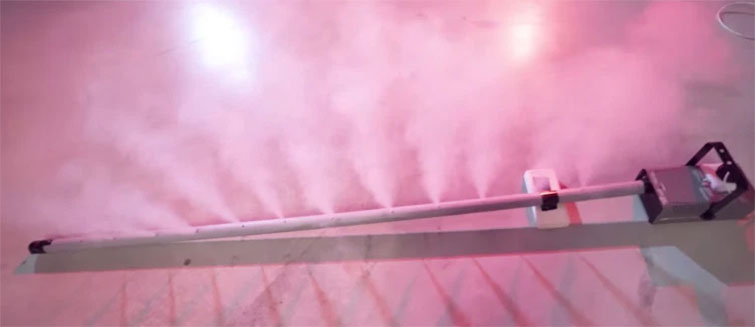
Image via Cinecom.
If you can’t get your hands on the DF-50, and you need more out of your inexpensive party machine, there are a few tricks you can pull to improve the quality and dispersion of your fog. Or, if you’re handy enough, break out your tools and build a few inexpensive rigs that you can power will household equipment to get truly epic interior fog.
The Budget Option
If you’re on a budget (or working as a one-man band), Atmosphere Aerosol is a great alternative. The compact cans fit right into your camera bag, which is great to keep around for whenever you need fog in a pinch.
The Outdoor Option
If you need to fog an outdoor scene, you’re going to need a bit more horsepower than a party machine and a fan. With an insect fogger and your own fog tube of death, you can create beautiful, dreamy environments that, with the right approach in post-production, you can turn into perfect horror or fantasy sequences.
Overall, adding texture to the atmosphere of your next shoot is a great way to add production value. If you’re looking for a way to make your work more cinematic, fog or haze may be the perfect option.
And if you’re in a pinch, or working with someone else’s footage, we’ve got you covered with smoke, fog, and vapor overlays.
Get this free fog overlay pack on our site. Plus check out our custom element packs with smoke and vapor elements.
Cover image via Roberto Sorin.
Looking for more video production tips and tricks? Check out these articles.
- Using Foreground Elements to Elevate your Next Production
- Tips for Rewriting Your Screenplay Without Starting Completely Over
- How to Get The Best Results When Filming In Natural Fog
- How to Use Calibration Tools for Footage, Sound, and Monitors
- The Essential Guide to Finding Deals on Video Production Gear


